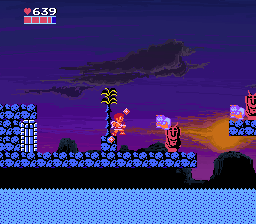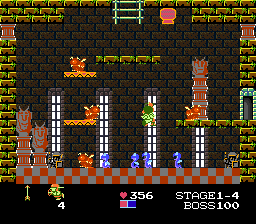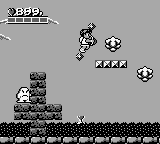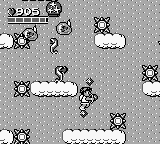Just what sort of world is Angel Land where Pit has adventures?
Metal Slug: Missing in Action updated with unused objects in MS7 and Advance among other things, sourced from reader submissions that have been sitting in my inbox for at least two years. I don’t know what I do to deserve this kind of support, but y’all might wanna reconsider. Why, you can drop this stuff on TCRF without having to wait on me to get off my keister!
I’ve been on an inexplicable Kid Icarus kick lately, for some reason. It’s a game that’s always stood out among the early first-party NES library, automatically earning a reputation as the counterpart to Metroid in some capacity. Paired with its Game Boy sequel and prolific appearance in the likes of Captain N, for years it felt like a franchise that was forever missing in action, at least until Super Smash Bros. Brawl and Uprising gave it a very anime makeover.
Unlike other NES titles of its time, it’s a game you don’t quite immediately ‘get’ within just 30 second of playing. Most folks’ impression of the game is largely based off of climbing for a bit, entering doors that lead to nowhere, then falling down a pit and turning the game off. Not quite as pick-up-and-play as the likes of Balloon Fight, is it?


I figured I’d finally give the game the time of day, and did so by playing the 3D Classic version on 3DS, which offers a new “custom” mode that eliminates Pit’s slidey movement and allows you to slow his descent while falling. It doesn’t undo all the game’s old-fashioned quirks, but paired with the digital manual, it made the game that bit more accessible to a total rando otherwise unacquainted with the game. The price is still something worth balking at (someone please put bricks through Nintendo’s windows until they re-evaluate their dodgy prices), but paired with the colourful new backgrounds it’s at least a better show than just a raw Virtual Console release with no extras.

It’s very possible I just wasn’t paying attention, but I feel like it wasn’t emphasised enough that the 3D Classic games are brand-new ports tailored to the hardware? I’d always assumed they were just emulators with fancy filters. This is perhaps most noticeable in Excite Bike, with its genuine conversion of the background crowds and scaffolding into 3D, and its new wide-screen display. Kid Icarus doesn’t quite have the same luxuries — it would have no use for widescreen and I personally find its 3D background effect extremely nauseating (though to be fair I haven’t enjoyed any of the 3D features yet – Excitebike just have novelty factor on its side).
Being a port, this means it isn’t 100% exact to the NES original. I was watching videos to pick up some tips, and noticed stuff was totally different from what I knew! Changes ranged from tiny little nuances to omissions of somewhat pivotal features, but there’s enough to make playing on NES and 3DS different experiences. Some of the bigger stuff has been noted on the appropriate wikis, but the smaller stuff I’ve yet to see anyone remark upon. This by no means a side-by-side examination of every little quirk and foible, but just things I clearly noticed when playing the original NES version after the fact.
● different Specknose behaviour


Playing the NES version really paints these rooms as unexpected dangers, with flying noses coming at Pit likes bats out of hell. This is a shocking swerve from the 3DS version, which are a lot slower and more placid by comparison, moving in very easily recognisable patterns; this sluggishness applies to all flying enemies, including the tiles in Zeus’ harsh training chambers. Both versions are pattern-driven, but the 3DS version is extremely easy to conquer with ease, while on the NES I still ran the risk of losing a life if I wasn’t on my toes.
● different enemy behaviour


This sort of thing applies to all enemies, actually! The Monoeyes and other ‘tracking’ enemies aren’t as zippy in their decision making for a start. The jumpy Keron and Commyloose tend to cover the same distance with every leap, while in the NES version they can lengthen their distance at the peak of their jump if they please. It’s small changes in behaviour that make the NES game that bit more unpredictable.
The Famicom Disc System version of Metroid apparently has better randomisation for enemy behaviour, something which got nerfed in the Western NES release. It’s possible the same thing applies to Kid Icarus…? Metroid fans are turbo nerds so of course that stuff gets documented, while Kid Icarus fans are outliers and never formed a documentative society. It’s not too late to get on that, people!
● Pit’s arrow range


Pit can hug the walls much closer than he did in the NES game. This is the kind of bullshit minutiae you come to expect from Random Hoo Haas, but it’s notable for allowing you to shoot Reapers from below when they hang over an edge. Try as you might, you gotta get on their level to blast them in the NES game. A whole new world of tactics is opened up! In a similar turn, Pit’s arrows can penetrate narrow 8-pixel platforms in the 3DS version, allowing you to snipe enemies from below, which I don’t think is possible in the original.
● missing 2nd quest


The original game loops you back to the start after you beat Medusa, allowing you to keep all your Hearts and items. This is kind of essential to getting the best ending, as maxing out your arrow strength, life metre, items and hearts on one playthrough is a tall order. (NOT FOR ME THOUGH I’M COOL)
The 3DS version ditches this entirely. When you beat the game, it just resets your save file. You start back on the first stage with no hearts and nothing else. That’s a bit of a swiz, innit? That means the first room of 1-1 has absolutely no use, because you’re never strong enough to impress Zeus.


On that note, I should mention the save files, huh? The save system is lifted from the FDS version, itself shared with the likes of The Legend of Zelda and FDS Metroid. This means text is formatted to accommodate the new eight-letter names for Pit… and that means there’s no longer a password system. Want to skip to the final stage? Want to horse around with a wacked-out inventory? Fat chance! The game automatically saves after every stage and has no option to copy files, so if you want to practise world 3, you’ve just got to play the whole game from the start. By no means a deal breaker, but it’s a blow against pick-up-and-play replay value. This may be down to the game recording your high scores, and doesn’t want a powered-up second loop throwing the scores out of joint.
The NES 3D Classic games were ported by Arika, and while one would assume the source code for these old games still exists (wasn’t the source code for Metroid floating around on X-CulT years ago?), these changes suggest something’s up. Either too many of its functions relied on specific behaviour in the NES/Famicom hardware, perhaps random number generators in regards to enemy patterns, or Arika were forced to make amends to code that couldn’t be found… or they just changed it for balance reasons. Who can say?


As such, although the port made an excellent introduction to Kid Icarus for a newbie like myself, I can’t consider it the ‘definitive’ experience, as much as I believe that’s a misnomer to begin with. The optional control scheme and tamed enemies make it easier to get into, allowing you to properly soak in the general flow of gameplay with less risk of unexpected death. But for replay value, it kind of blows; the enemies are a bit too predictable for my liking, and losing the chance to play again with all your accruements is a bummer.
Still, it’s a pleasant way to play the game on the go, and gestures like its new backdrops, tweaked controls and added save system are a boon. One would like to think buying it would tell Nintendo that ports with a bit of spit and polish put into them are more appreciated than boring no-frills Virtual Console releases, but that’s assuming Nintendo actually listens to what the fans want. What do you mean Peach still isn’t playable in Mario Maker 2?! DON’T GIVE ME THE OLD “DRESS PHYSICS” EXCUSE AGAIN


It can be a tough game to get into, but finally ‘understanding’ the game makes Kid Icarus that more strangely compelling. It has a curious philosophy to its gameplay, leaning heavily on opaque mechanics and its bevy of cryptic items and upgrades. So much of the game’s pickups and power-ups are nigh-indecipherable until you make enough progress, or parse the strangely-formatted manual. Understanding how all these disparate features come together is practically an adventure in itself.
Once you do, it’s all about power play. Kid’s moveset is adequate, but his sluggish speed and limited range make it hard for him to compete against the zippy and persistent enemies. By taking it slow and steady, wiping out the incoming waves before proceeding, you amass hearts to afford power-ups, and earn points towards health and strength upgrades either at the end of the stage or by encountering Zeus.
It’s slow-going, but before you know it you’re tanking entire waves of enemies thanks to your stock of life refills, or charging through them with your powerful shields. Pit’s got power, baby! Being able to blaze through stages you once approached with caution is a real thrill, building up your confidence to almost overzealous levels… but there’s always the risk of losing it all because of one flubbed jump, or simply underestimating an enemy’s strength. If you want to be hoity-toity about it, you could even compare it to the original tale of Icarus and flying too close to the sun. Keep count of how many life refills you’ve burned through, dumbass!


I have mixed feelings about ‘level up’ systems in games, largely because it often means monitoring how you play so you don’t accidentally obliterate all difficulty. Kid Icarus does it well because although some upgrades are permanent, like your health and your arrows, there are essential power-ups that can be stolen by enemies or stripped away when you die. Your strength is something to be actively protected and maintained, not taken for granted. Pit might live among angels and gods, but he can still die like a chump.
I’m not quite as enamoured with it as I am the NES original, but the Game Boy sequel, Of Myths And Monsters, is a funky little curiosity. Its monochrome aesthetic boasts some cute graphics, and there’s some appreciated quality of life gestures, like the removal of instant deaths, hammers having more use than rescuing nigh-useless soldiers for boss fights, and so on.


My big beef is the lack of danger. Without the instant-death pit lurking beneath your toes, there’s not the same punishing qualities that I’d argue are key to Kid Icarus‘ identity. It is a fair concession for the tiny Game Boy screen, which is forced to scroll just to show the same size of playing field. Not being able to see the whole screen at once is a blow and instantly changes how the game ‘feels’ — being able to assess all platform and threats at once was part of the experience, and the levels instead have to structure themselves into splinters so you’re not being mollywopped by baddies from all angles.
Still, it’s nifty, and it does offer some advancements on the formula. I began digging into the game’s ROM a month or so ago to figure out how it ticked, and made decent progress into how its data can be modified. Even if I don’t make a ROM hack myself, I aim to post my notes somewhere so folks can use it and hopefully build user-friendly tools out of it. I don’t know how much challenge you can add by editing level and enemy layouts — the hacks of the NES version haven’t exactly impressed me, sorry to say! — but hopefully it’ll scratch an itch for what few Kid Icarus nuts are out there.
I do want to play Kid Icarus Uprising sometime, though it’s a beast of its own making. Becoming infatuated with Kid Icarus comes with the frustration that there’s nothing else quite like it. Most other Nintendo franchises have their copycats, but where do you turn for vertically-scrolling platformers steeped in cryptic mechanics and gradual power creep…?
